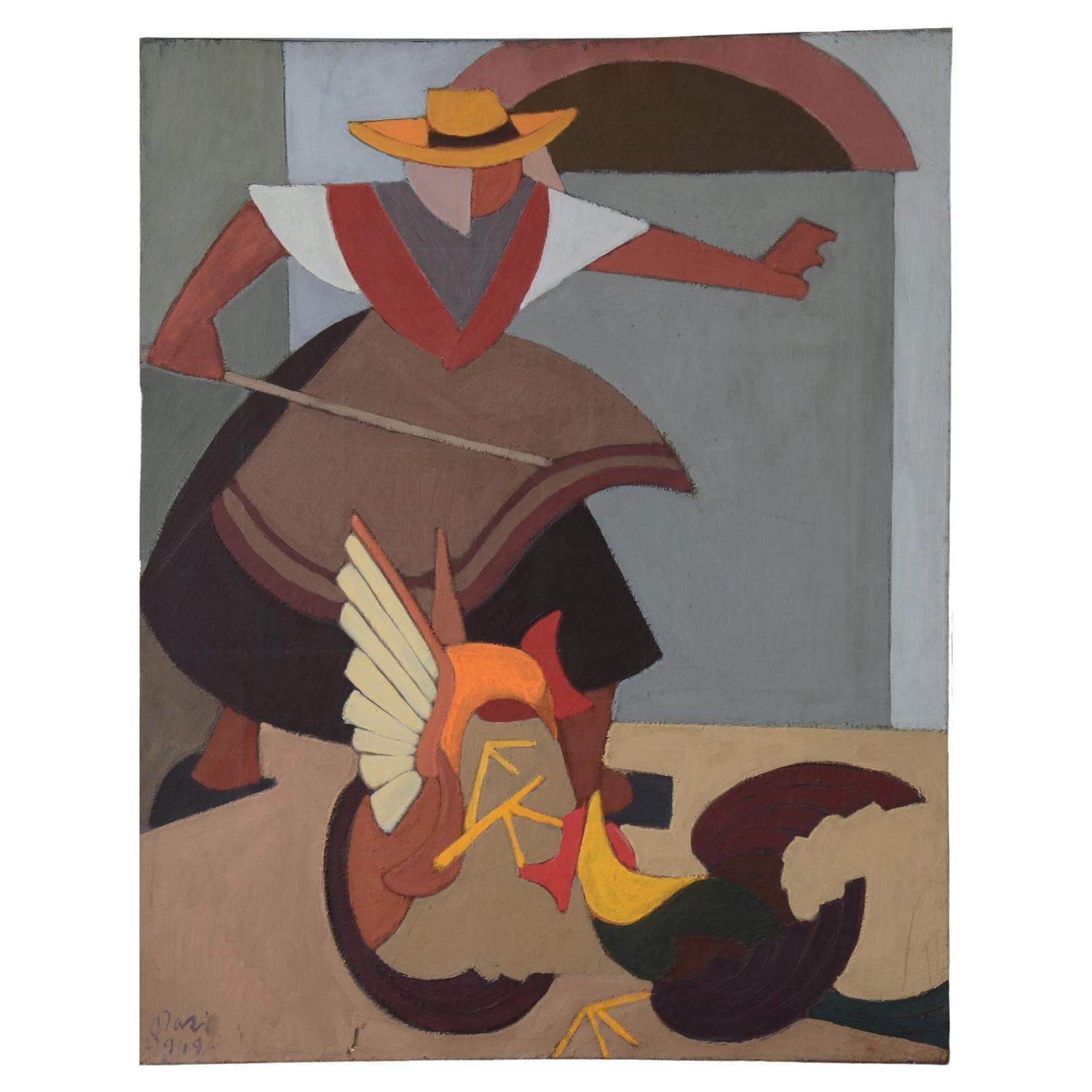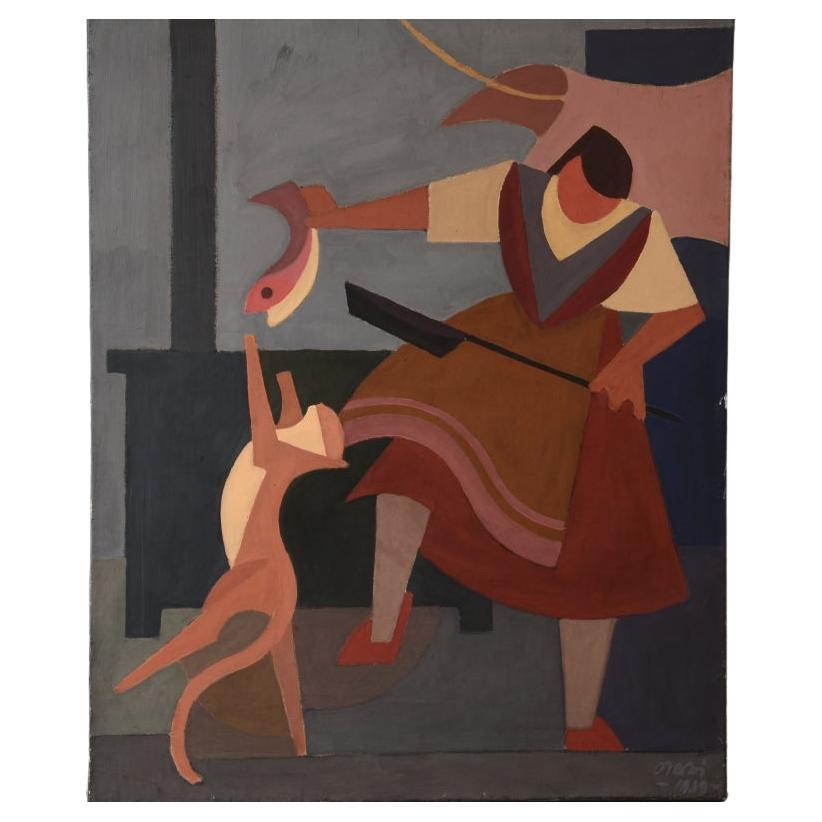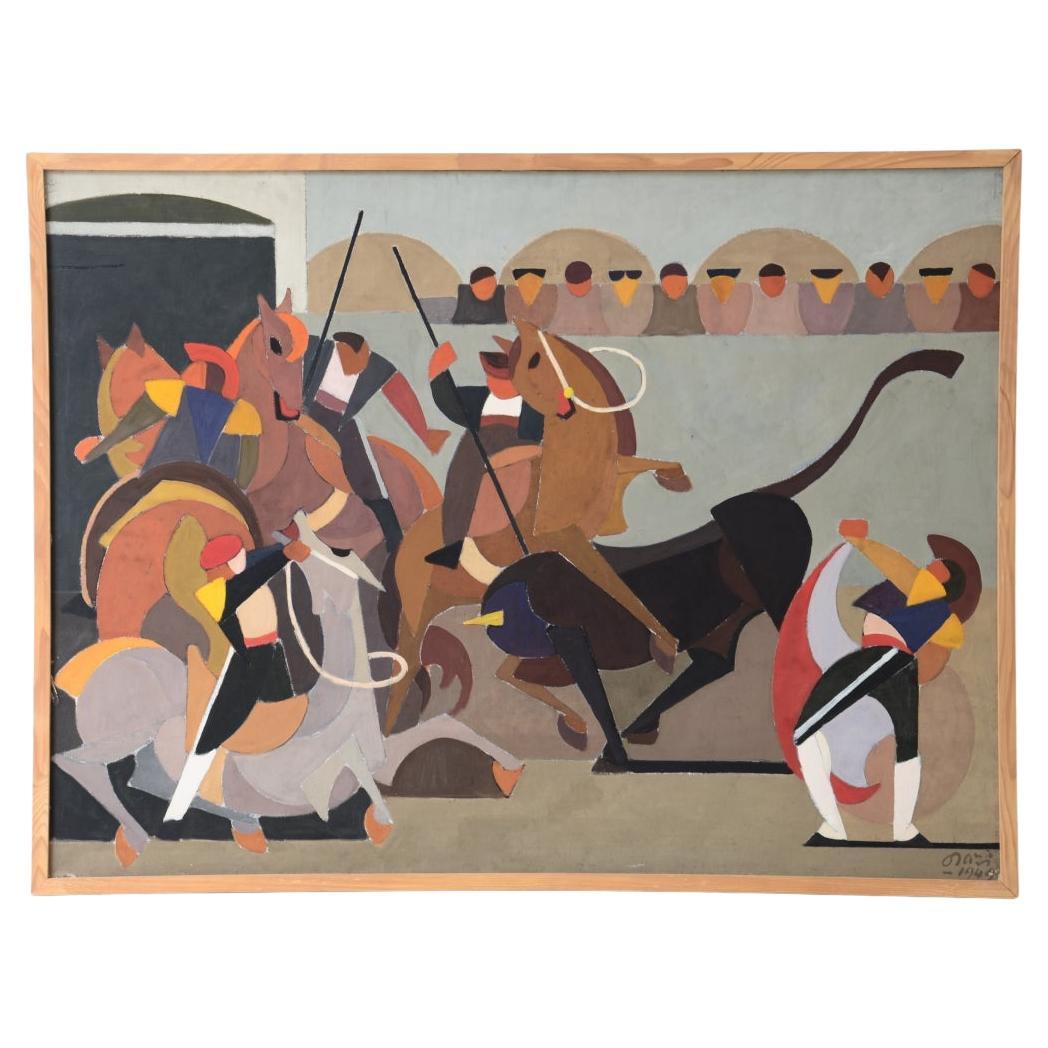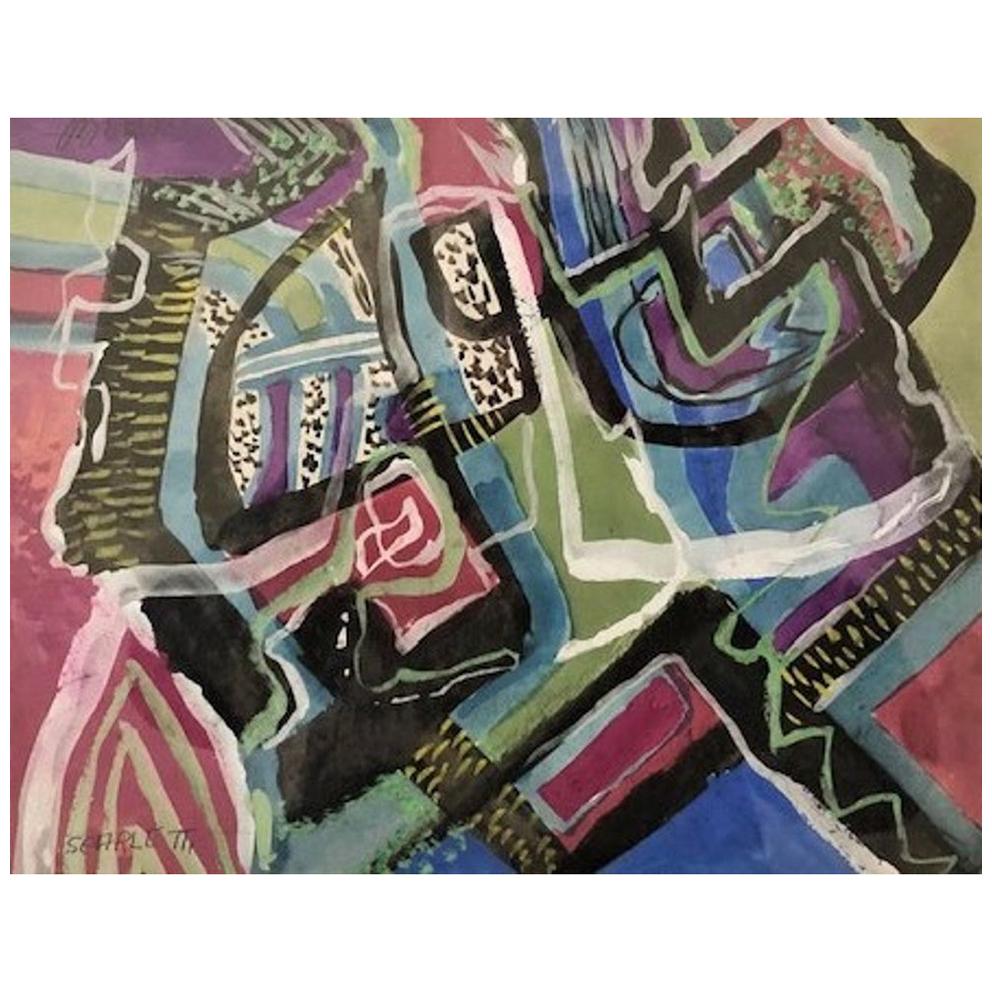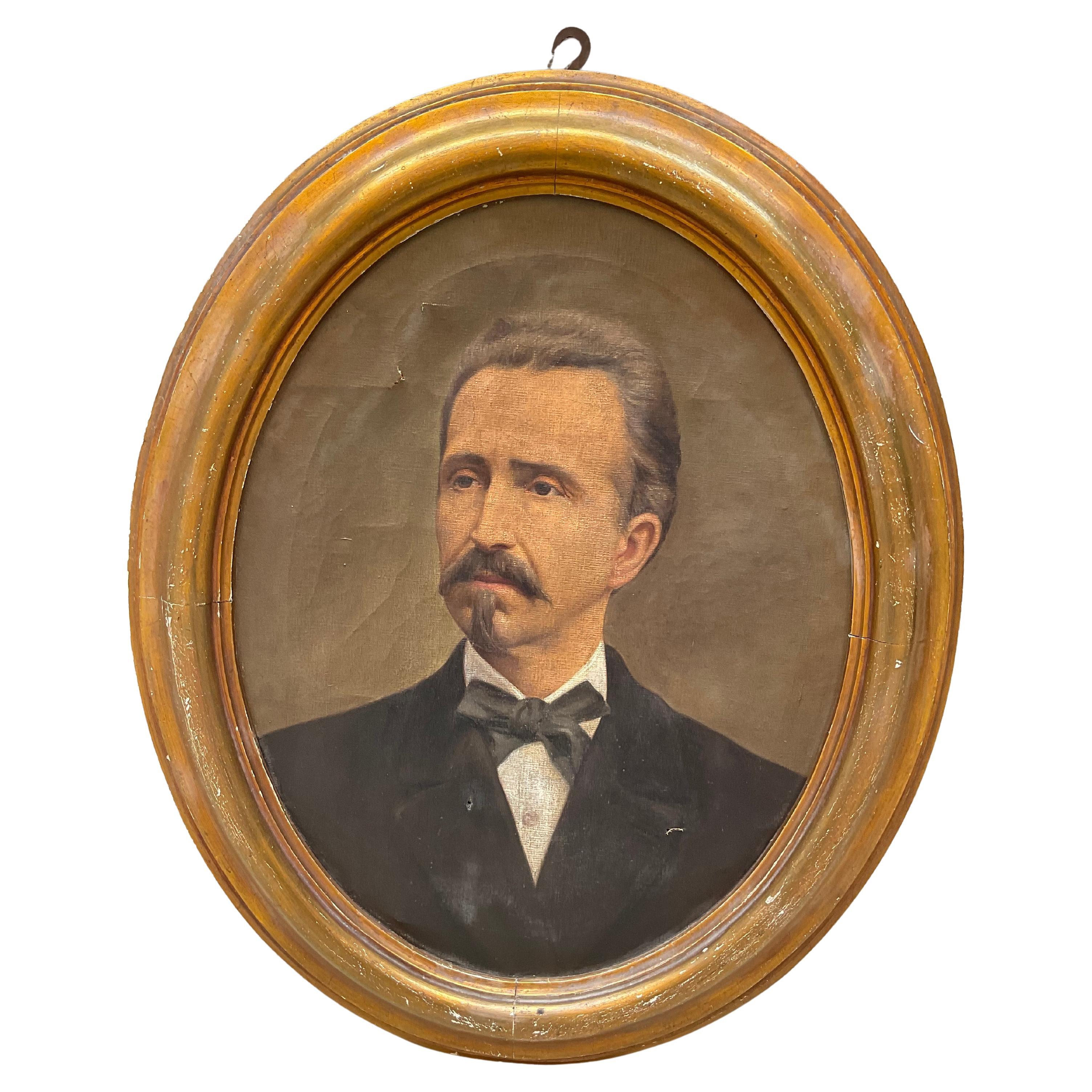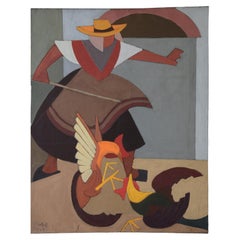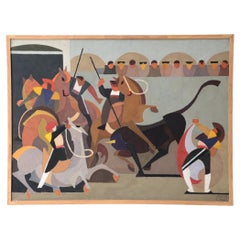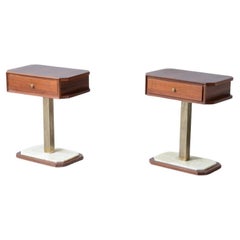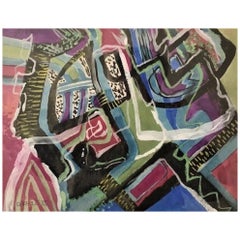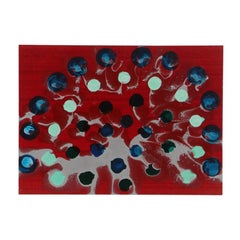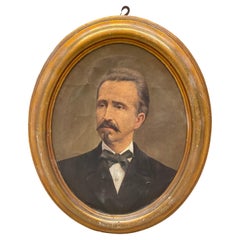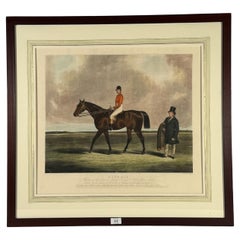Items Similar to Orazio Orazi guache on canvas
Want more images or videos?
Request additional images or videos from the seller
1 of 5
Orazio Orazi guache on canvas
About the Item
Orazio Orazi (1906-1979)
Tempera on canvas Untitled
(The Fountain) 1949
Italian painter very active abroad, recognized by the name of Orazì and member of the Ecole de Paris. His career characterized by links with the historical avant-garde saw him exhibit at the Venice Art Biennale in '34 and '36 and in various Milanese galleries.
92 x 73 cm
- Creator:Italian school XX ct. (Artist)
- Dimensions:Height: 36.23 in (92 cm)Width: 28.75 in (73 cm)Depth: 0.99 in (2.5 cm)
- Style:Mid-Century Modern (Of the Period)
- Materials and Techniques:
- Place of Origin:
- Period:
- Date of Manufacture:1949
- Condition:
- Seller Location:Milano, IT
- Reference Number:1stDibs: LU8258244607202
About the Seller
5.0
Vetted Professional Seller
Every seller passes strict standards for authenticity and reliability
Established in 1993
1stDibs seller since 2023
14 sales on 1stDibs
Typical response time: 12 hours
- ShippingRetrieving quote...Shipping from: Milano, Italy
- Return Policy
Authenticity Guarantee
In the unlikely event there’s an issue with an item’s authenticity, contact us within 1 year for a full refund. DetailsMoney-Back Guarantee
If your item is not as described, is damaged in transit, or does not arrive, contact us within 7 days for a full refund. Details24-Hour Cancellation
You have a 24-hour grace period in which to reconsider your purchase, with no questions asked.Vetted Professional Sellers
Our world-class sellers must adhere to strict standards for service and quality, maintaining the integrity of our listings.Price-Match Guarantee
If you find that a seller listed the same item for a lower price elsewhere, we’ll match it.Trusted Global Delivery
Our best-in-class carrier network provides specialized shipping options worldwide, including custom delivery.More From This Seller
View AllOrazio Orazi, The Gauls guache on canvas
By Italian school XX ct.
Located in Milano, IT
COD-2587
Orazio Orazi (1906-1979)
Tempera on canvas Untitled (The Gauls) 1949
signature and date on the front
Italian painter very active abroad, recognized by the name of O...
Category
Mid-20th Century Italian Mid-Century Modern Paintings
Materials
Canvas
Orazio Orazi tempera on canvas " the cat"
By Italian school XX ct.
Located in Milano, IT
COD-2588
Orazio Orazi (1906-1979) T
empera on canvas Untitled (The Cat) 1949
signature and date on the front
Italian painter very active abroad, recognized by the name of Orazì ...
Category
Mid-20th Century Italian Mid-Century Modern Paintings
Materials
Canvas
Orazio Orazi "The bullfight at Cheval" canvas
By Italian school XX ct.
Located in Milano, IT
Orazio Orazi (1906-1979)
Tempera on canvas "The bullfight at Cheval" 1949
signature and date on the front
Italian painter very active abroad, recognized by the name of Orazì and m...
Category
Mid-20th Century European Mid-Century Modern Paintings
Materials
Canvas
Pair of bedside tables in walnut with marble base
By Italian school XX ct.
Located in Milano, IT
COD-2484
Pair of bedside tables in walnut with marble base and brass column uprights.
Italian manufacture around 1960s.
48x30xh55
Category
Mid-20th Century Italian Mid-Century Modern Night Stands
Materials
Marble
Storage unit with front in grinded wood
By Italian school XX ct.
Located in Milano, IT
COD-2463
Storage unit with front in grinded wood and two drop-down shelves with interiors in blond maple and a ground glass top.
Two drawers and elegant feet with brass tips.
Itali...
Category
Mid-20th Century Italian Mid-Century Modern Commodes and Chests of Drawers
Materials
Wood
$9,286 Sale Price
20% Off
Four ceiling sphere lamps
By Italian school XX ct.
Located in Milano, IT
COD-2485
Four ceiling sphere lamps made of blown glass and brass cones.
Murano manufacture, approx. 1960.
dia 40 cm
Category
Mid-20th Century Italian Mid-Century Modern Chandeliers and Pendants
Materials
Art Glass
$6,413 Sale Price
35% Off
You May Also Like
Rolph Scarlett, Modernist Abstract Composition, Guache on Paper, Ca. 1950’s
By Rolph Scarlett
Located in New York, NY
Artist: Rolph Scarletti (Canadian, 1889 – 1984)
Object: Modernist Abstract Composition
Period: Ca. 1950’s
Medium: Guache on paper, framed
Dimensions (unframed):
Height: 9-1/3”
Width: 12”
Dimensions (framed):
Height: 22-3/4””
Width: 25-3/4”
Rolph Scarlett (Canadian, 1889 – 1984) was a consummate explorer of twentieth-century abstract painting. Never afraid of trying new styles, curious and opinionated, constantly engaged with the world around him while steadfastly aware that he was on his own path and his alone, Scarlett more than once proved to be at the artistic zeitgeist of the eras in which he lived. Exposed very early on to the work of Paul Klee through a chance meeting in Europe with the artist himself, Scarlett took up abstraction with a fervor that never diminished during his long and impressive career. To create something that had never existed before: this was Scarlett’s great cause. And that is what is most obvious when you look at Scarlett’s work—you have never seen anything quite like it.
Scarlett was Canadian-born, came of age in the Midwest, and spent few important years in Hollywood, where he designed stage sets. His work from this early period echoes Klee’s use of color, his confidence in naïve, primitive forms, and his blend of abstraction and figuration. In its flat spatial qualities it prefigures the Indian Space painting of the 1940s by a decade. He moved to New York in 1933 and eventually found his first great patron at the Museum of Non-Objective Painting, directed by Baroness Hilla Rebay and art patron Solomon R. Guggenheim. Guggenheim would collect over 60 works by Scarlett for his collection, more than any other artist outside of Vasily Kandinsky and Rudolf Bauer.
As a frequent exhibitor and lecturer at the Museum of Non-Objective Painting (MNOP), Scarlett honed his sensitive feel for bodies in space and capitalized on his trademark use of bright, vivacious colors into accomplished, perfectly harmonized geometric works. However, Scarlett soon morphed these hard-edged forms into a nuanced expressionistic abstraction which, at its best, seems to be populated by dancing forms that animate the canvases. Along this way he was advised by Rudolf Bauer, the German expatriate and one of the originators of non-objective painting in the teens. Bauer had the idea for the Museum, and Rebay, his champion, had found in Solomon Guggenheim a patron for manifesting it. When Bauer emigrated just before World War II, he wanted to meet Scarlett. The two became friends, and Bauer advised Scarlett on his work over the course of many years. Even in a 1979 interview, Scarlett began to tear up as he recalled his first meeting with Bauer, a man whose work he "worshipped," describing that, "It was a touching moment for me, I’ll tell you."
Scarlett and Rebay also had a close, important relationship, one in which he bore the brunt of her sometimes condescending, if motherly, critiques and admonitions with tolerance and gratefulness. Eventually, though, he had to push back. In a letter from 1951 he writes, "I have noticed with growing amazement that during the past three years you have accepted less and less of my work—and, that same work, which you rejected has been accepted and shown in the best and largest shows all over this country."
This period—the late 1940s to the early 1950s—did in fact correspond to Scarlett’s most critical success, and to a return to the fanciful forms and characters of his pre-war work. At the same time, he found his own rhythm and complexity using a drip style similar to, though denser and more opaque than, the one made famous by Jackson Pollock, who had worked for many years at the MNOP and with whom he shared common influences. In 1949 he had a very well received solo show in 1949 at the Jacques Seligmann Gallery, reviewed very favorably in The New York Times: "The impression made by these paintings is one of originality and strength." He was also included in a juried show "American Painting Today" at the Metropolitan Museum of Art in 1950 and in the Whitney Annual of 1951. The curator for the Whitney show in fact bypassed a selection of Scarlett’s careful geometrics in favor of a new "lyrical" drip painting—one which he describes as having had "a helluva good time" making.
Rebay articulated her loss of control over Scarlett very keenly in one of her last official letters to him: "So your way ended in the horrid jungle it is in now; even a Mr. Pollock’s smearage was not bad enough for you to have a try at; and betraying yourself, you betrayed art and my faith in you, and my present disgrace by my failure to foresee such an outrageous possibility—since you even paint objectively now."
Yet, despite the fact that he was moving in his own direction when the change in leadership took place at the Museum of Non-Objective Painting and Rebay was forced out as director, Scarlett was hit hard. He understood this change rightly as a betrayal by the establishment. Scarlett was a unique individual and soul, and was affected personally and philosophically by the idea that the movement with which Scarlett had aligned his talents seemed to disappear overnight, and his life’s work rendered valueless.
Without the Museum’s support, Scarlett decided eventually to move to the artists’ community of Shady, New York, just outside of Woodstock. He had occasional shows throughout the years, but mostly settled down to regional obscurity. He began making jewelry, which had been his first trade, and it was following a show of his jewelry in 1975 at the Jaro Gallery, that he was rediscovered by Samuel Esses, and his wife Sandy.
Samuel Esses was a successful businessman and an avid collector. He always sought out that which was unusual and, like Scarlett, was ahead of his time in many ways. For example, in 1979, Sam became enthralled with the early graffiti appearing on the New York subway trains. With the sole goal of preserving these groundbreaking yet short lived works of art he was inspired to create "The Esses Studio," a painting warehouse and workshop for graffiti artists to work in a studio, collaborate, and paint on canvas. The biggest names of graffiti writing participated—Futura, Crash, Dondi, Zephyr, and Daze to name a few. The project was well received and provided critical validation at an important time for this alternative form of abstraction to be recognized by the established art world. The success of the "Esses Studio" helped fuel an alternative fire that would propel gallerists and curators to acknowledge other street artists and provide a foundation of acceptance for the early careers of Keith Haring and Jean-Michel Basquiat. It is not a stretch to say that what Esses saw in the graffiti art of the 1970s was very similar to what he saw in 1950s-era Scarletts—something raw, honest, and melding many twentieth century influences into one unique form. Inspired by the importance of the collection and the passion of the collector, Weinstein Gallery...
Category
Vintage 1950s Canadian Mid-Century Modern Paintings
Materials
Paper
Joel D'Orazio Polyurethane on Mahogany Board Titled "Peacock"
Located in Chicago, IL
Colorful work of abstract art by Joel D'Orazio using non-conventional mediums. Polyurethane toned in various colors then applied to a beautifully grained piece of mahogany board. The result resembles the plumage of a peacock.
Joel D'Orazio began his career as an architect in the 1970s then in the latter part of the century began using art as a means of meditation, The images are uncommon, yet suggest the familiar forms of nature. Although the paintings are varied in color and composition, each image is part of a logical yet highly intuitive progression of work.
Exhibitions:
2012
CROSS MACKENZIE GALLERY, Washington, DC, Group Exhibition, 'Macho', December 1 to January 5.
Edison PLACE GALLERY - Washington Sculptors Group, Washington, DC,
Group Exhibition, 'Sculpture NOW 2009', Curated by Sarah Newman, June 13 to July 14.
HILLYER ART SPACE, Washington, DC, IA&A June Retrospective, May 29 to June 29.
Sotheby's, Washington, DC, ONE MAN SHOW, March 3 to April 14.
2011
ARTERY PLAZA GALLERY, Bethesda, MD, Washington Sculptor Group, 'Sculpture NOW 2011', Group Exhibition, November 9 to Dec. 16.
McLEAN PROJECT for the ARTS, McLean, VA, Group Exhibition curated by Jayme McLellen, 'Strictly Painting', June 16 to July 30.
Zenith GALLERY, Washington, DC, Group Exhibition, Zenith Gallery's 33rd Anniversary,
'ZARTiculation', April 2 to July 3.
BLACKROCK CENTER for the ARTS, GERMANTOWN, MD, 3 PERSON EXHIBITION,
JUNE 2011 Showing Chair Sculptures.
HILLYER ARTS SPACE, Washington, DC, Group exhibition, 'Process: Reaffirmation' curated by Gina Marie Lewis, April 1 to April 29.
ARTS IN EMBASSY PROGRAM, Group Exhibition in US Ambassador's home, Copenhagen, Denmark
Zenith GALLERY, Washington, DC, ONE MAN SHOW @
1111 Pennsylvania Ave NW, 'Joel D'Orazio : Listen to Me',
Febrruary 7 to May 13.
2010
AREA 405, Baltimore, MD, group Exhibition, '41 Miles North', with Washington Sculptors
Group, October 7 to November 5.
CCBC ART GALLERY, Community College of Baltimore County, Group Exhibition, 'Kaleidoscope', curated by Marcia Bass, October 12 to November 19.
HISTORICAL SOCIETY of WASHINGTON, Washington, DC, WSG Group Exhibition curated by Jayme McLellen, 'Porous Borders', September 10 to December 6.
INDUSTRY GALLERY, Washington, DC, Group Exhibition with Campana Bros., Mark Newson, Nacho Carbonell, Peter Traag...
Category
Early 2000s American Paintings
Materials
Mahogany, Paint
$2,600 Sale Price
20% Off
Oil on canvas depicting gentleman - gold leaf wood frame - ITALY 1910.
By Italian school XX ct.
Located in Milano, IT
Italian school early 20th century (year about 1910)
Oil on canvas depicting gentleman
with wooden frame finished in gold leaf.
Category
Vintage 1910s Italian Folk Art Paintings
Materials
Gold Leaf
19th Century French Guache Colored Engraving
Located in Scottsdale, AZ
19th Century French Guache Colored Engraving. Beautiful piece purchased in France. Age appropriate wear, see detailed photos or message us with questions.
Category
Antique 19th Century French Napoleon III Paintings
Materials
Wood, Paint
Abstract Guache Composition by Jozef Mees, Belgian Constructivism 1976
Located in Antwerp, Antwerp
A colorful abstract gouache on paper by Belgian artist Jozef Mees, dated 1976. Framed behind glass with a golden frame.
Jozef Mees (1998-1987) is a Belgi...
Category
Vintage 1970s Belgian Mid-Century Modern Paintings
Materials
Paper
Oil On Canvas
Located in West Palm Beach, US
This oil-on-canvas painting from the 1960s exudes a captivating depth and complexity, despite its mystery artist. The composition is a masterful interplay of grays, blacks, and musta...
Category
Vintage 1960s Unknown Mid-Century Modern Paintings
Materials
Paint
$2,530
